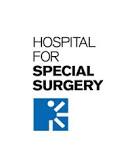Features to Predict Success With Nonoperative Treatment of Patients With Rotator Cuff Tears
| Status: | Active, not recruiting |
|---|---|
| Conditions: | Orthopedic |
| Therapuetic Areas: | Orthopedics / Podiatry |
| Healthy: | No |
| Age Range: | 18 - 100 |
| Updated: | 2/24/2019 |
| Start Date: | January 2006 |
| End Date: | January 2020 |
The goal of this study is to find which patients will improve with the nonsurgical treatment
of physical therapy for the treatment of rotator cuff tears.
of physical therapy for the treatment of rotator cuff tears.
Rotator cuff tears are found in up to 40% of people over the age of 50 with the prevalence
increasing with age. While most people remain asymptomatic, it is unknown why some develop
symptoms. In symptomatic patients, surgical repair of a torn rotator cuff fails in 30-50% of
patients, yet the majority of patients have a significant reduction pain despite failure of
the repair. Nonoperative treatment has reported successful outcomes in 25-82% of patients yet
it is not known which patient-related features predict success with nonoperative treatment.
The general aim of this research effort is to identify patient features (historical
information, physical examination findings, and MRI-based pathology) that would predict
success (defined by reduction in visual analog pain scale, and patient satisfaction) with the
nonoperative treatment of rotator cuff tears. The proposed study design is a prospective
cohort study of patients with rotator cuff tears who will follow a standard physical therapy
program derived from an evidence based medicine (EBM) systematic review of Level 1 and Level
2 studies.
Study the effect of historical information on predicting success (as determined by pain
relief and patient satisfaction) of nonoperative treatment using the EBM based physical
therapy program in treating patients with rotator cuff tears.
Study the effect of physical examination findings on predicting success of a nonoperative
treatment using the EBM-based physical therapy program in treating patients with rotator cuff
tears.
Study the effect of the severity of the rotator cuff pathology (using standardized magnetic
resonance imaging protocols) on predicting success of nonoperative treatment for patients
with rotator cuff tears using the EBM-based physical therapy program.
increasing with age. While most people remain asymptomatic, it is unknown why some develop
symptoms. In symptomatic patients, surgical repair of a torn rotator cuff fails in 30-50% of
patients, yet the majority of patients have a significant reduction pain despite failure of
the repair. Nonoperative treatment has reported successful outcomes in 25-82% of patients yet
it is not known which patient-related features predict success with nonoperative treatment.
The general aim of this research effort is to identify patient features (historical
information, physical examination findings, and MRI-based pathology) that would predict
success (defined by reduction in visual analog pain scale, and patient satisfaction) with the
nonoperative treatment of rotator cuff tears. The proposed study design is a prospective
cohort study of patients with rotator cuff tears who will follow a standard physical therapy
program derived from an evidence based medicine (EBM) systematic review of Level 1 and Level
2 studies.
Study the effect of historical information on predicting success (as determined by pain
relief and patient satisfaction) of nonoperative treatment using the EBM based physical
therapy program in treating patients with rotator cuff tears.
Study the effect of physical examination findings on predicting success of a nonoperative
treatment using the EBM-based physical therapy program in treating patients with rotator cuff
tears.
Study the effect of the severity of the rotator cuff pathology (using standardized magnetic
resonance imaging protocols) on predicting success of nonoperative treatment for patients
with rotator cuff tears using the EBM-based physical therapy program.
Inclusion Criteria:
• Patients (18-100 years of age) with MRI findings of a full-thickness rotator cuff tear
Note: Criteria to obtain a shoulder MRI to evaluate for rotator cuff tear [Appendix D]:
1. Significant weakness (≥ 2 points per guidelines above.)
2. ADL pain or night pain >/= 7 on VAS
3. Significant impingement (per guidelines above) + with significant symptoms for ≥ 3
months.
Exclusion Criteria:
- Acute rotator cuff tears (generally due to a high velocity injury and symptoms of less
than one month)
- Associated dislocations
- Associated fractures
- Systemic Rheumatologic disease, i.e. Rheumatoid Arthritis and Systemic Lupus
Erythematosis
- Patients being treated for bilateral rotator cuff tears simultaneously
- Patients unable to complete the forms
- Pain from neck or scapula
- Previous shoulder surgery
- Glenohumeral arthritis (meets ≥ 1 of below criteria)
- osteophytes >2mm on humeral head or glenoid
- Joint space narrowing with sclerosis or cyst formation seen on true AP or
axillary radiographs;
- humeral head contacting acromion
- Adhesive capsulitis
We found this trial at
9
sites
Click here to add this to my saved trials
Click here to add this to my saved trials
Click here to add this to my saved trials
Click here to add this to my saved trials
Hospital for Special Surgery Founded in 1863, Hospital for Special Surgery is the nation
Click here to add this to my saved trials
660 South Euclid Avenue
Saint Louis, Missouri 63110
Saint Louis, Missouri 63110
Click here to add this to my saved trials
Click here to add this to my saved trials
Click here to add this to my saved trials
